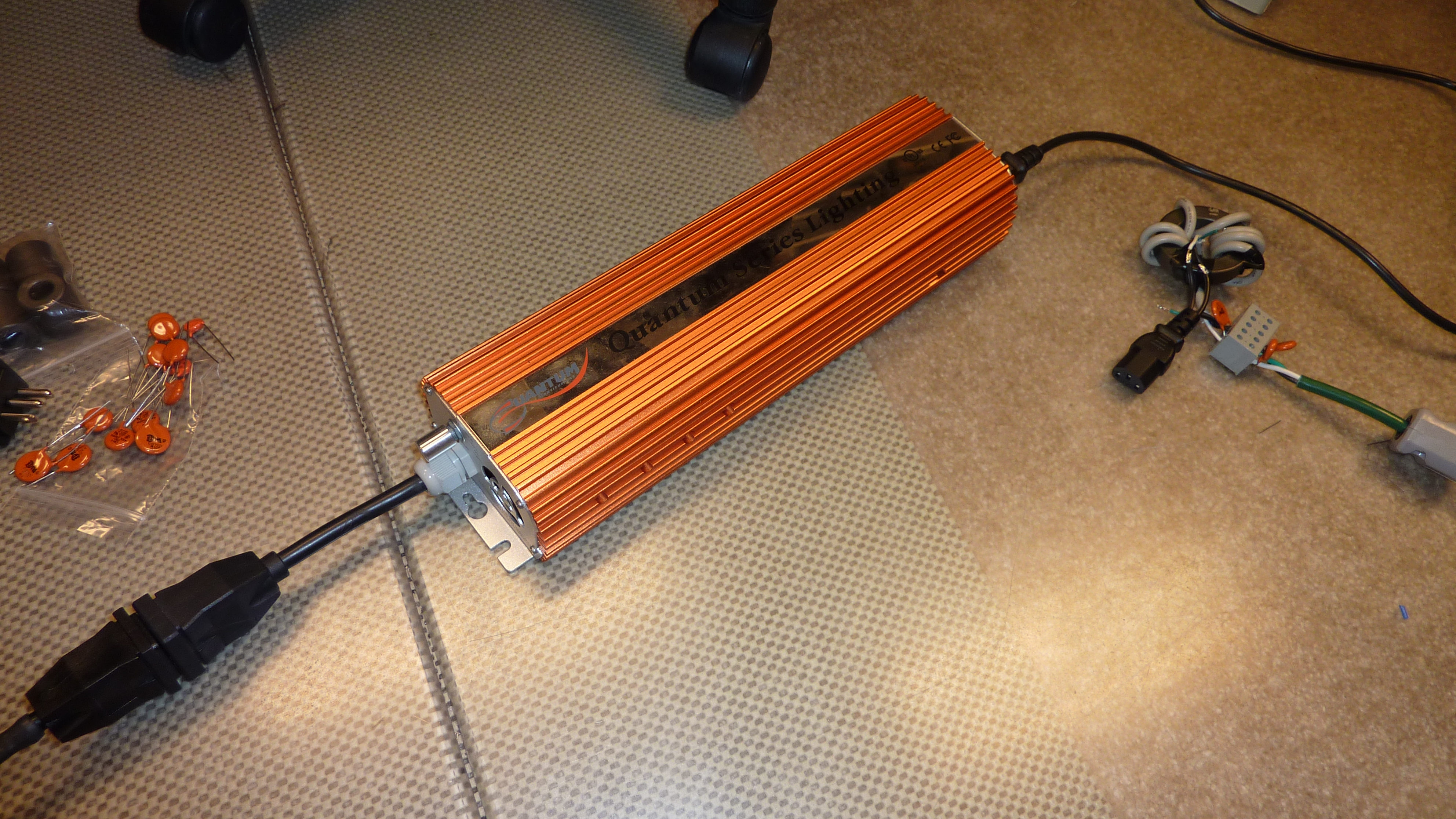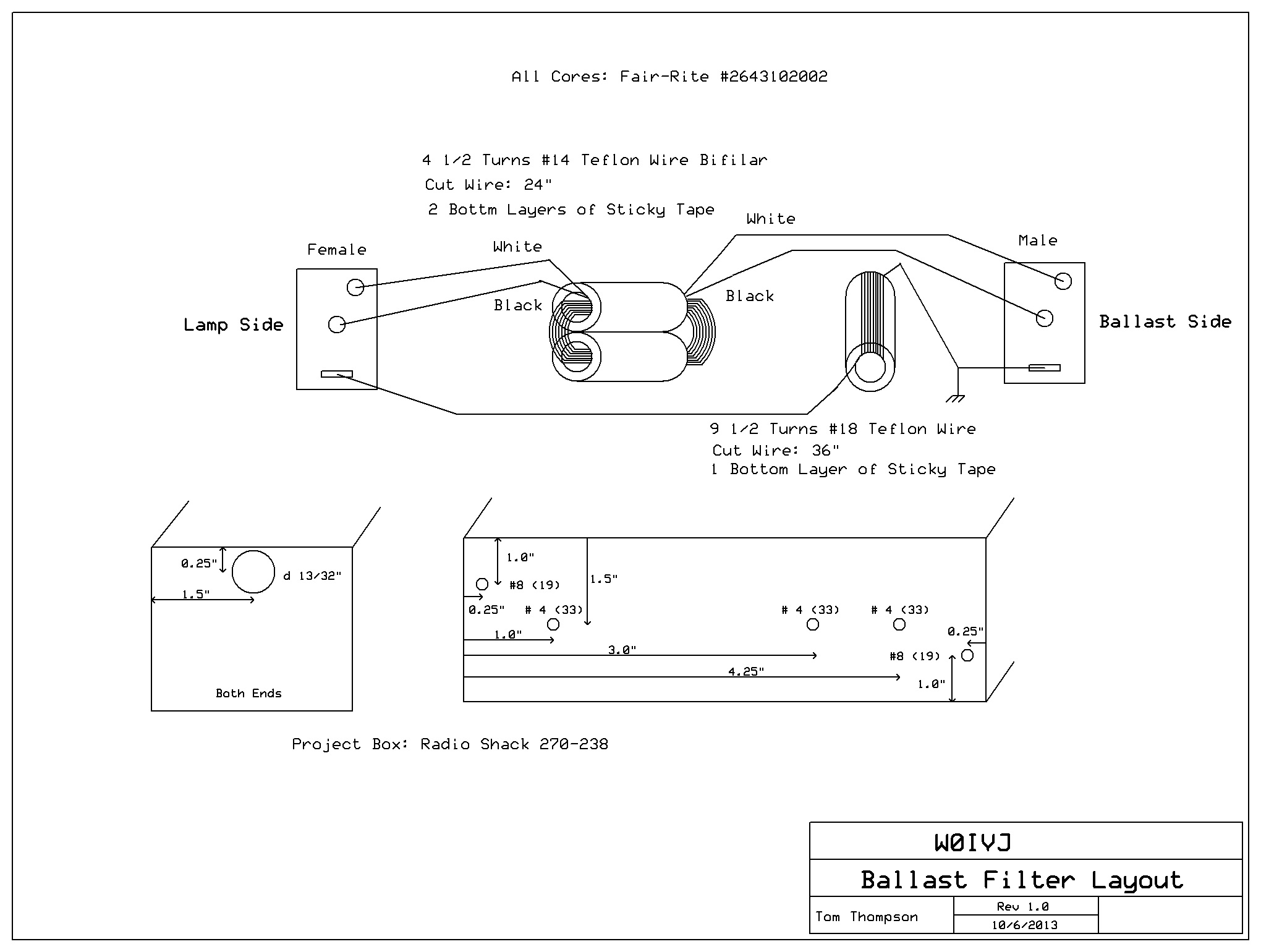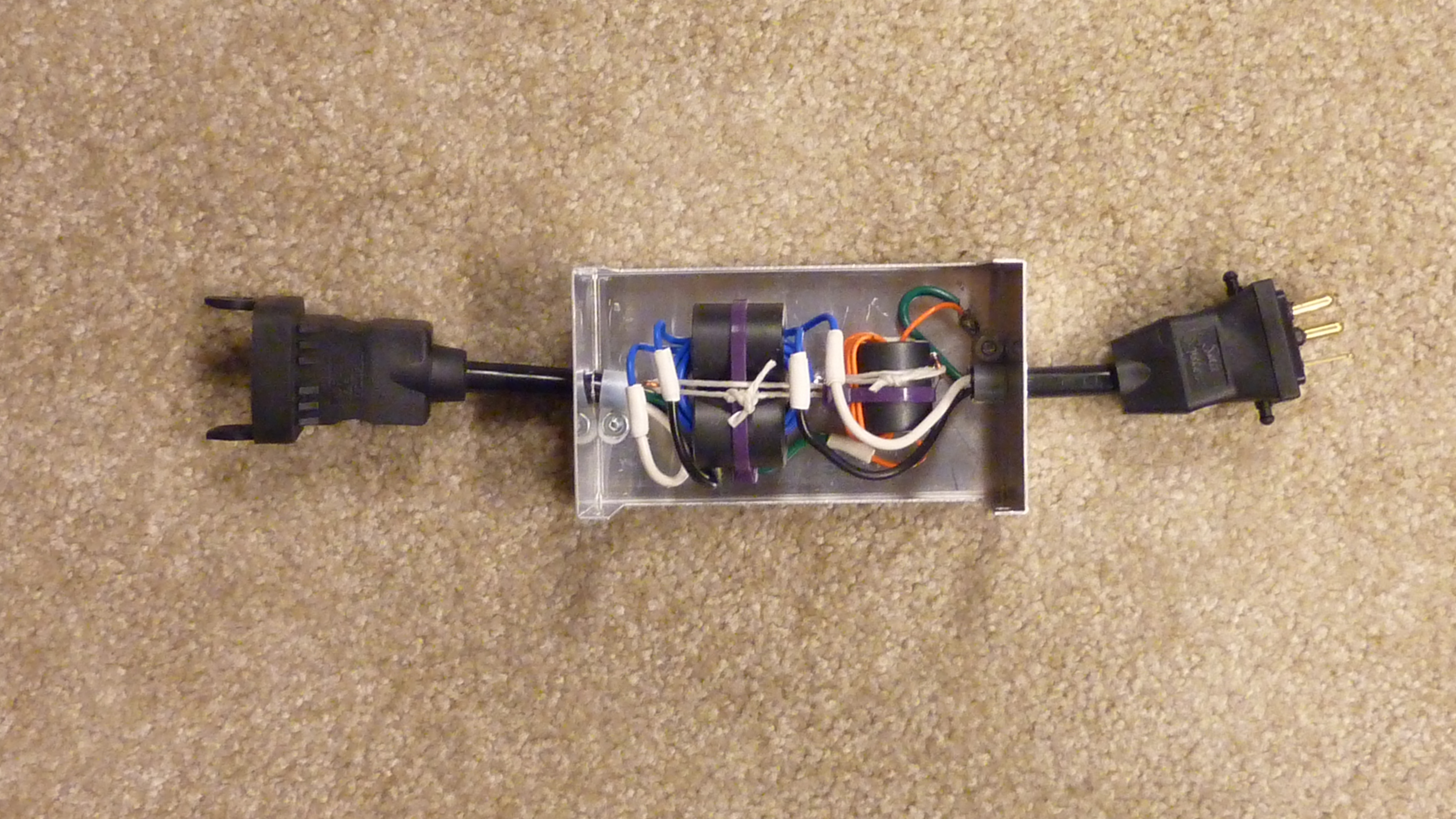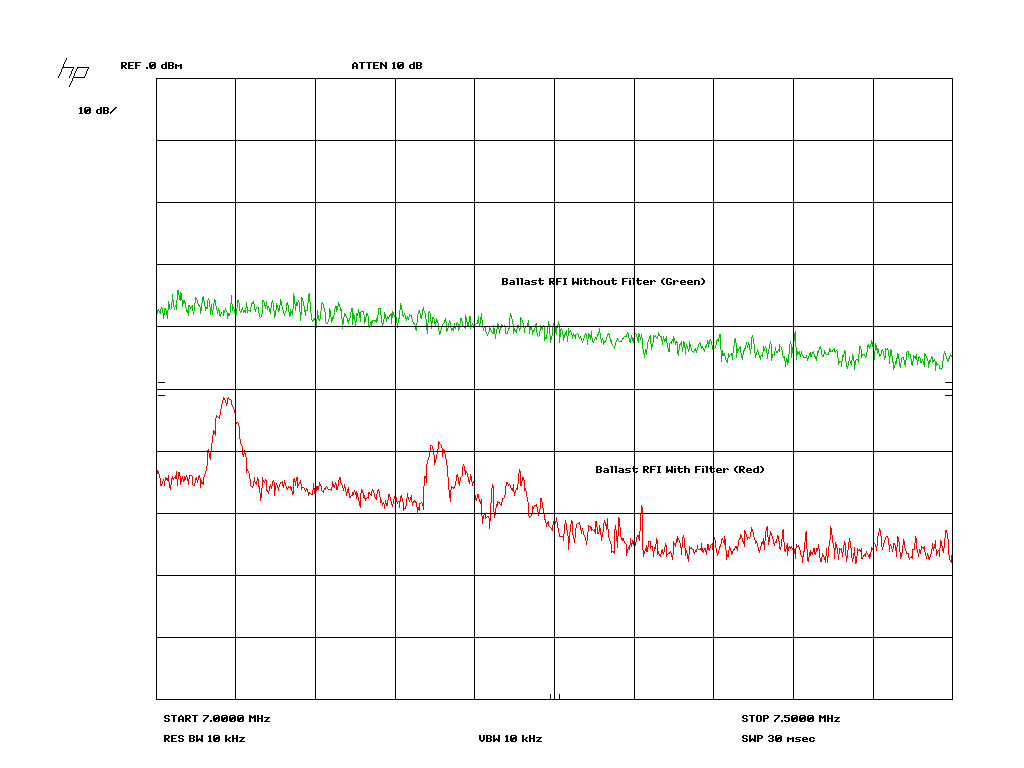 D...HiRes
D...HiRes
Typically the light fixture is removed from the ballast by about 25 to 30 feet. Since this length is about a 1/4 wavelength on 40 meters, it makes a good "antenna" for 40 meters so the RFI may be strongest on 40. I have heard emissions from these systems up to about 1/2 mile away. Also, since the "antenna" is so low to the ground, the RFI is mostly vertically polarized which is important when tracking it down. But that is another story. This site is about the filter development.
When the plants are young the lights are on 24/7. After about 2 weeks the lamps are on for 12 hours and off for 12 hours. The systems are usually on a timer so you can easily predict when the RFI will ensue once you have determined the turn on time.
A...HiRes
..
B...HiRes..
C...HiRes..
 D...HiRes
D...HiRes
A typical high pressure sodium bulb is shown in Figs. E and F. This is part of a test setup that I used to develop the RFI filter. One of the interfering growers was nice enough to loan me his ballast for the tests. I was able to get a used bulb that still worked for free from a local grow shop.
I built a Line Impedance Stabilizer Network (LISN) to check the conducted
emissions from the ballasts. The LISN schematic is shown in Fig.
G and the spectral plot is shown in Fig. H. The conducted emissions
were about 40 dB above what they should be according to part 15 or part
18 specifications.
Fig. I shows the signal strength and spectrum on the 40 meter band
of a Quantum 1000 watt ballast running a high pressure sodium lamp 1000
feet away from my location. The receiver is a Flex-1000. Notice
the spectrum and the S-meter reading of almost 10 dB over S-9 on AM in
an 8 kHz bandwidth.
 G..HiRes...
G..HiRes... H..HiRes...
I..HiRes...
After many hours of testing, I was able to develop a Lamp Side common mode filter that reduced the RFI by 30 dB. I found that a Line Side filter, both common mode and differential, was not as effective as the Lamp Side filter. Fig. J shows the schematic of the filter. Figs. K and L show the filter itself. The special connectors to accommodate a Lamp Side connection were made by cutting a lamp extension cord into. The special ballast-to-amp extension cord with the special connectors was purchased at a local hydroponics shop.
 J..HiRes...
J..HiRes...  K..HiRes...
K..HiRes... L..HiRes...
Fig. M shows a spectrum analyzer plot of an A/B comparison with the filter in and out. The spectrum analyzer was connected to a 40 meter dipole about 40 feet away from the ballast/lamp setup in my basement. The peaks in the red plot are actual 40 meter signals that are completely blanketed in the green plot when the ballast is operating. You can easily see the 30 dB difference between the two plots.
I made a recording with and without the filter in place. The first part of the recording is the normal band noise on 40 meters. In the next part of the recording, the filter is NOT in. You can then hear the lamp turn on and the RFI subside a bit as the lamp warms up. Next you hear 40 meter band noise again. The third part of the recording is with the lamp on and the filter IN. You have to listen carefully for the RFI. Finally, the last part of the recording is with the lamp turned off and the filter IN. You can barely hear the difference between the filtered RFI and the normal band noise. Listen to the recording HERE.
 M..HiRes...
M..HiRes...
Since I developed this filter, a commercial version has become available. Kevin, W7LOZ, passed on the information. It can be found at:
http://growershouse.com/revolution-ballast-emi-filter-reduce-rf-emi
although some have reported that this filter was not effective.
The effectiveness is probably dependent on the ballast/grow light installation.
and:
https://www.hydrofarm.com/p/BAF2020
John, K7KB, has found another filter option. Information on it may be found at:
http://growershouse.com/nanolux-rf-filter-set-reduce-rf-interference
Kevin, W7LOZ, also passed on information of a Galaxy ballast that has been tested at an EMI testing laboratory. That document may be read here.
Larry, K5RK, found the Galaxy Grow Amp Model 902220 to be very effective
in reducing RFI from his neighbor's grow light installation.